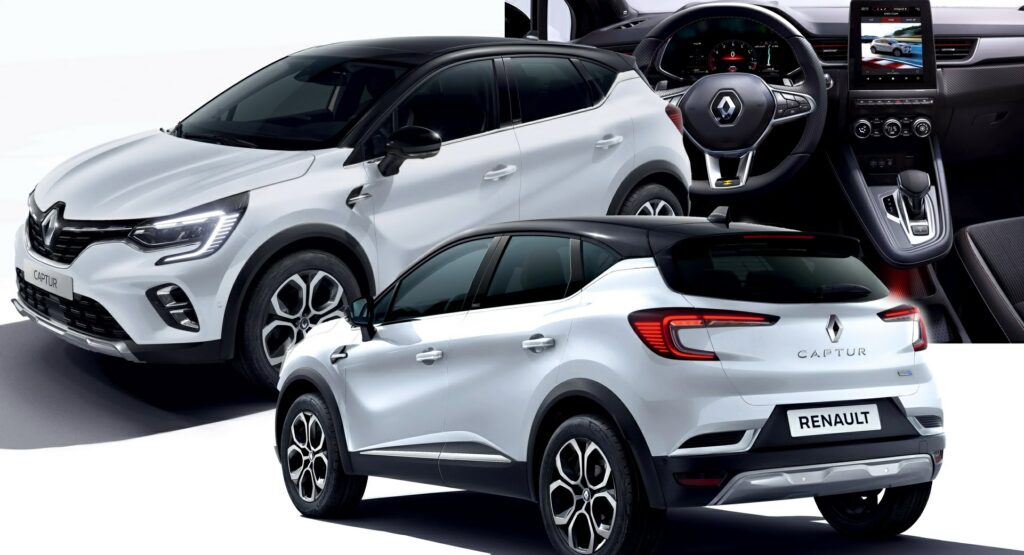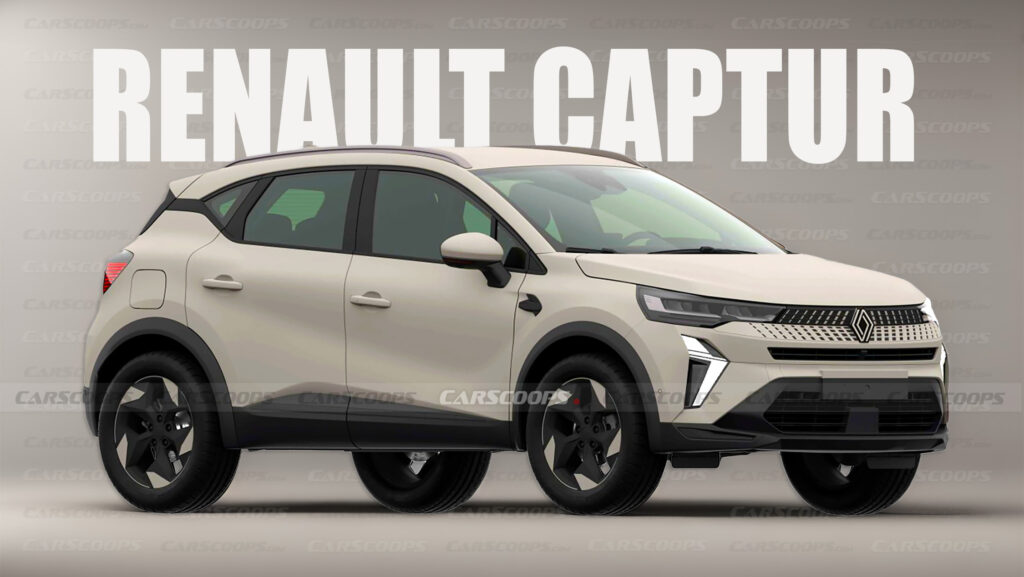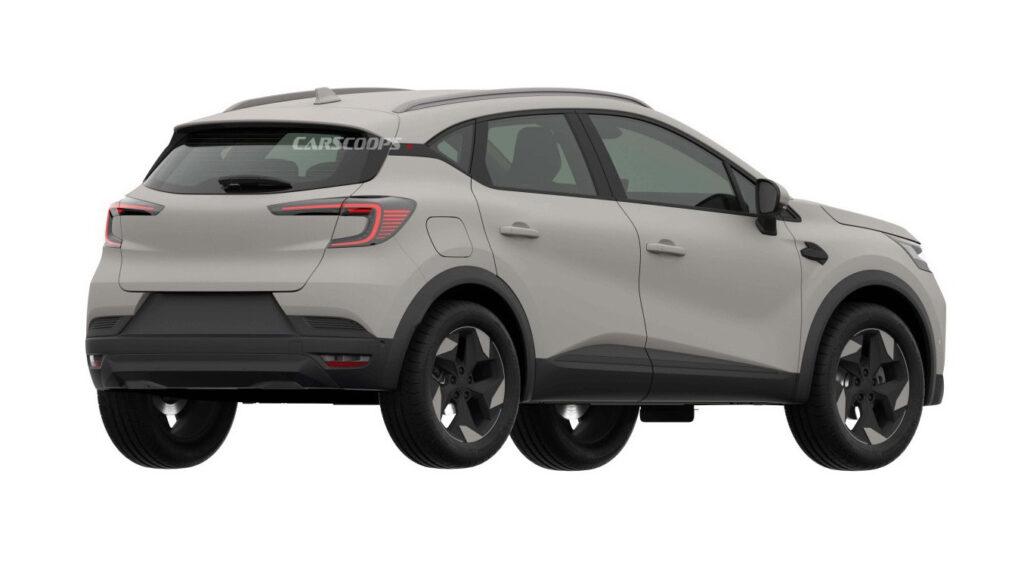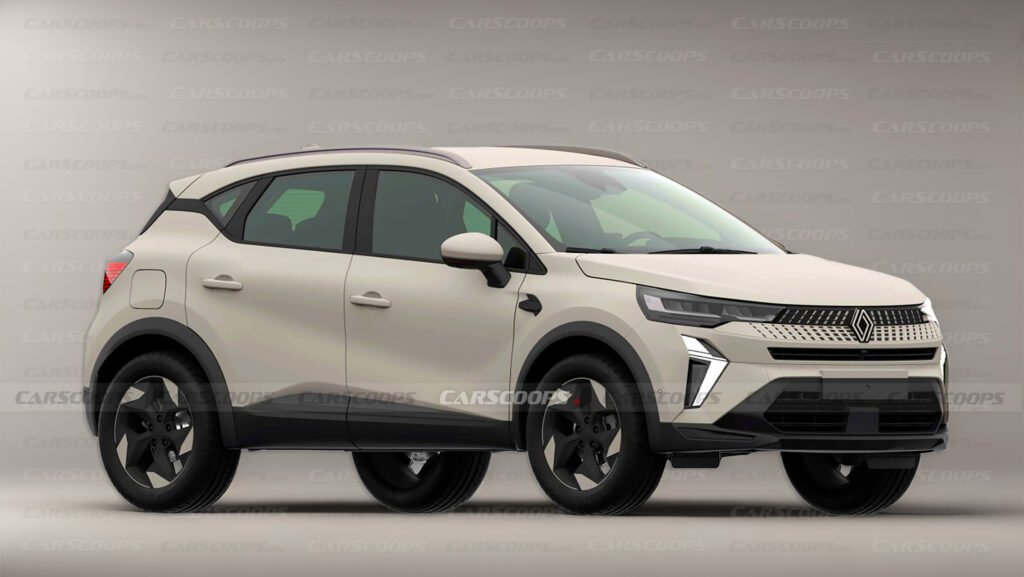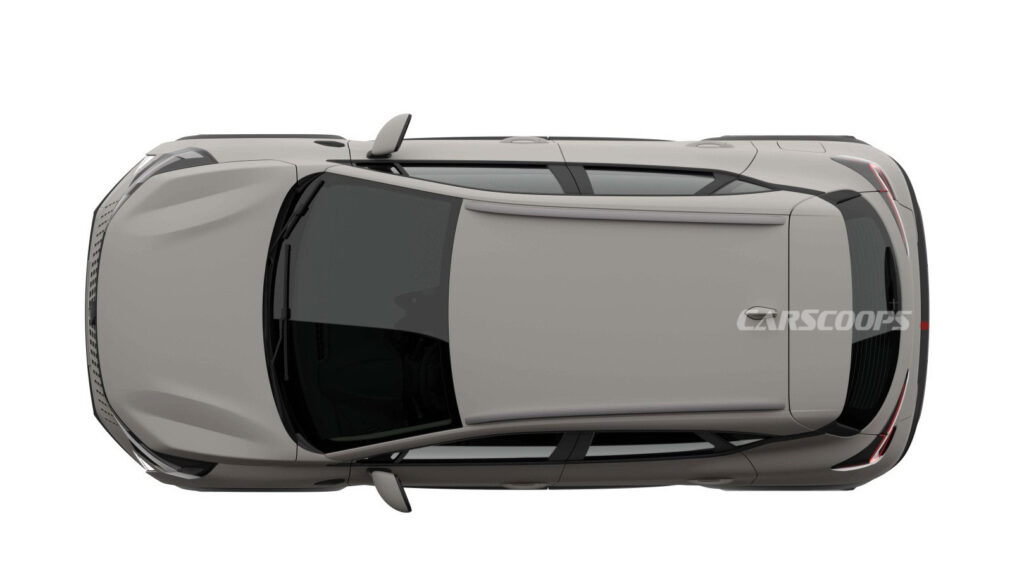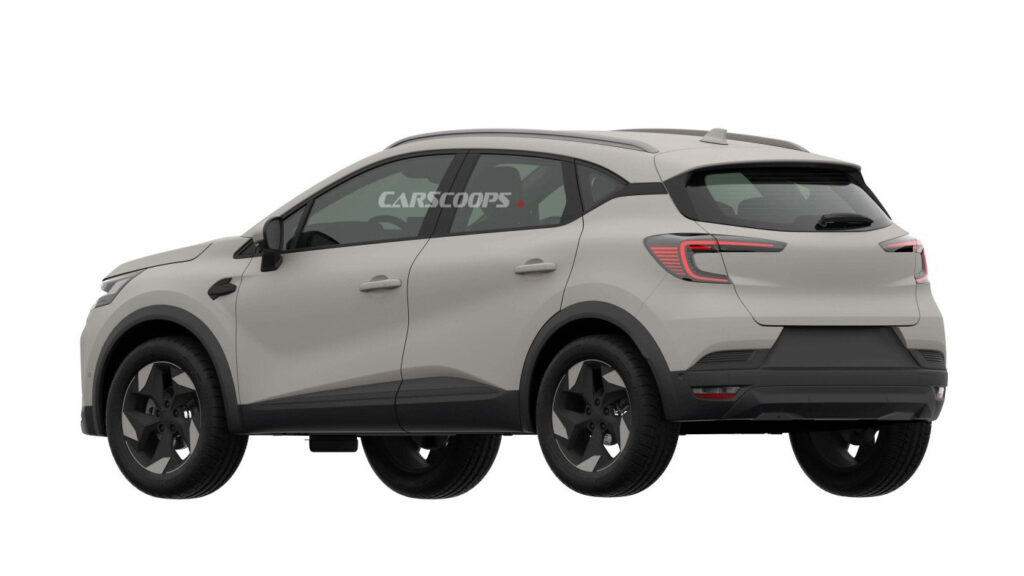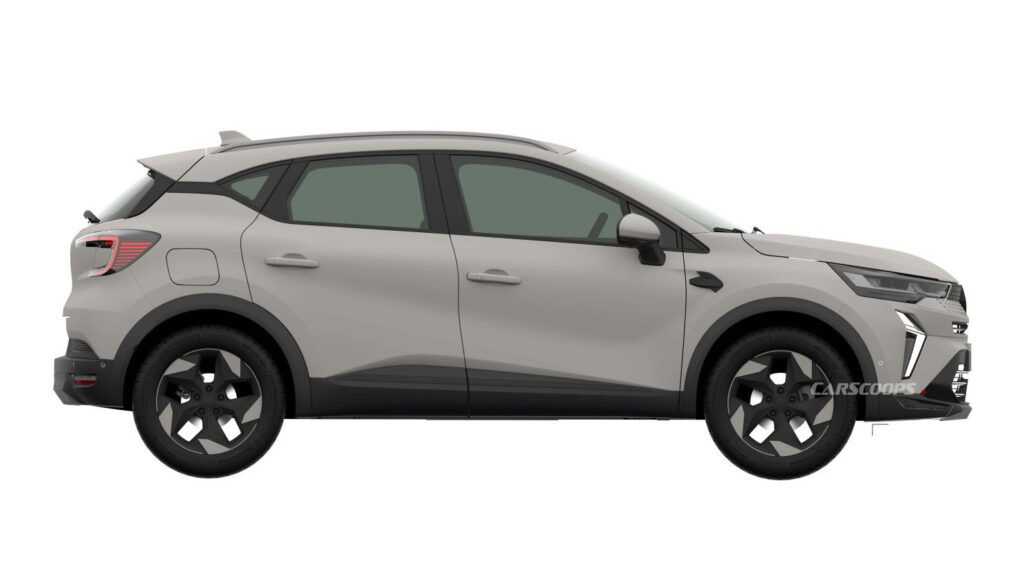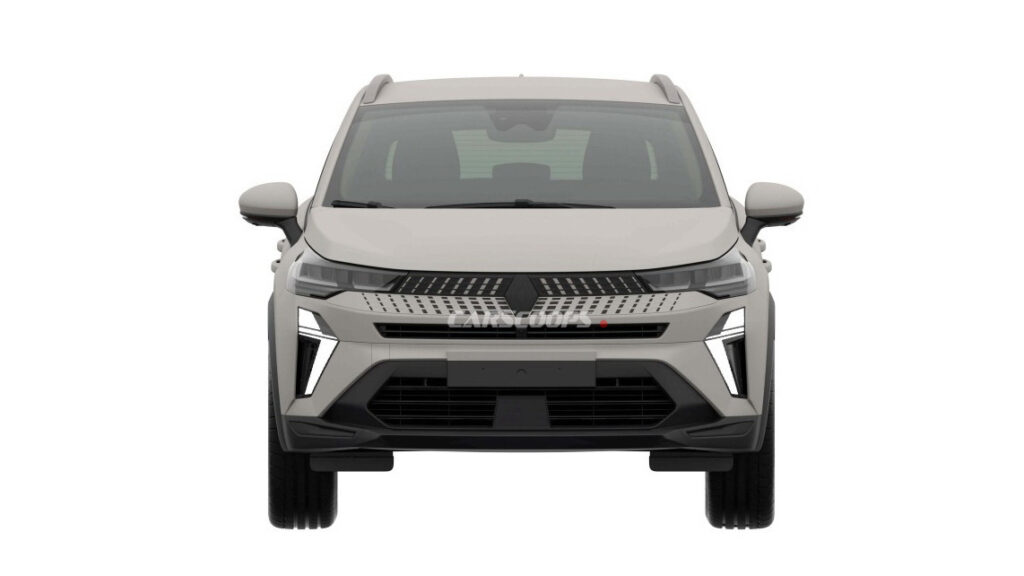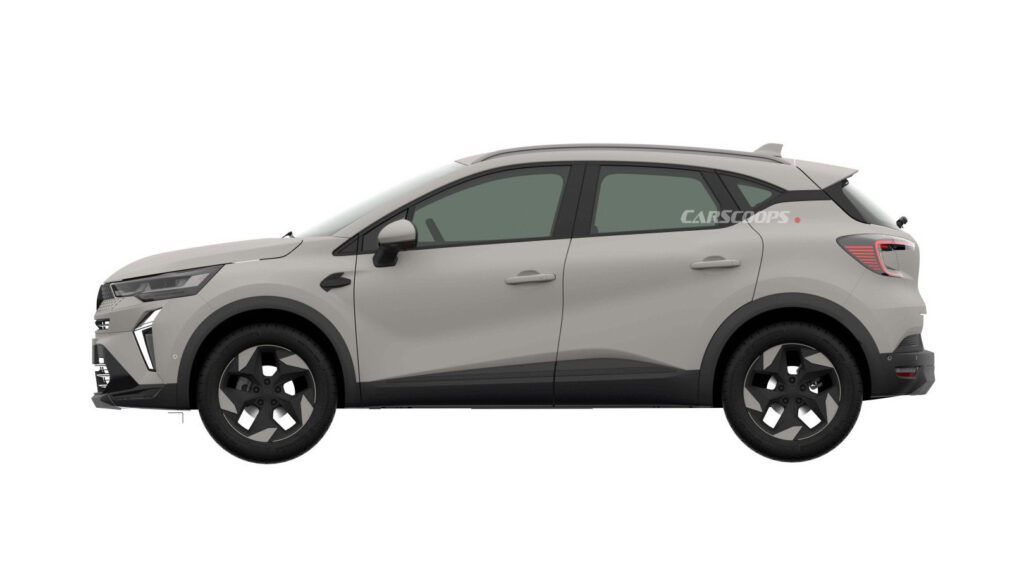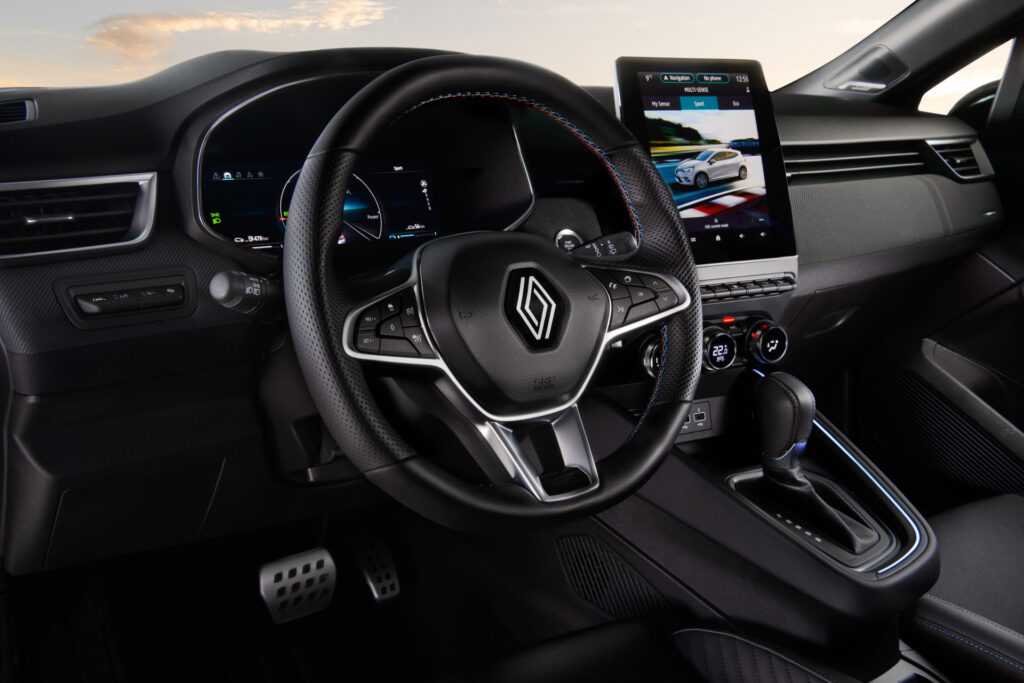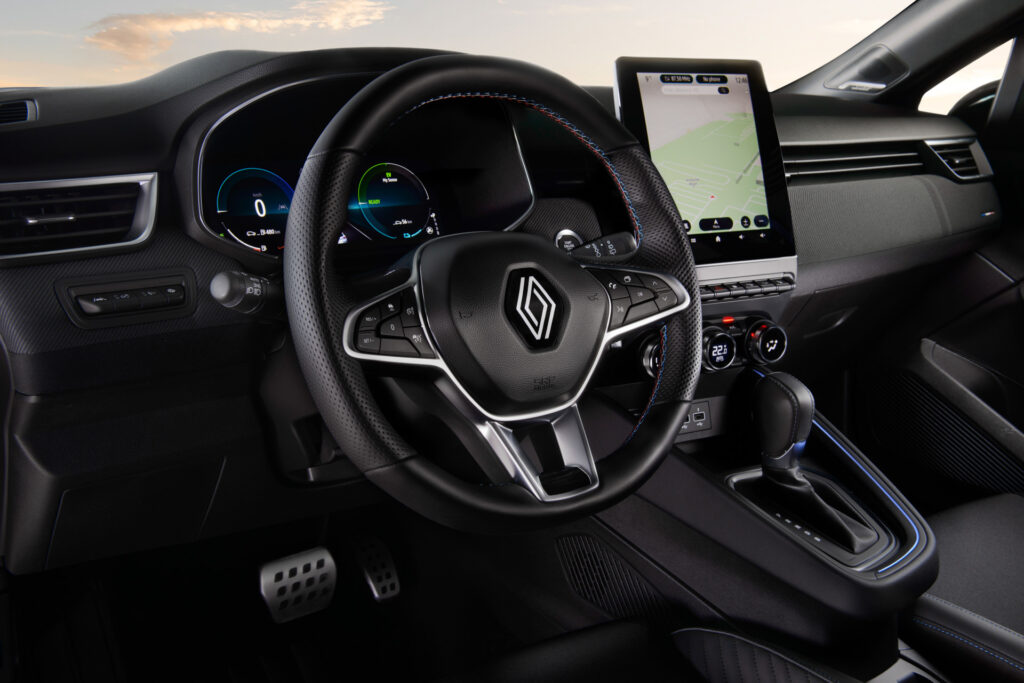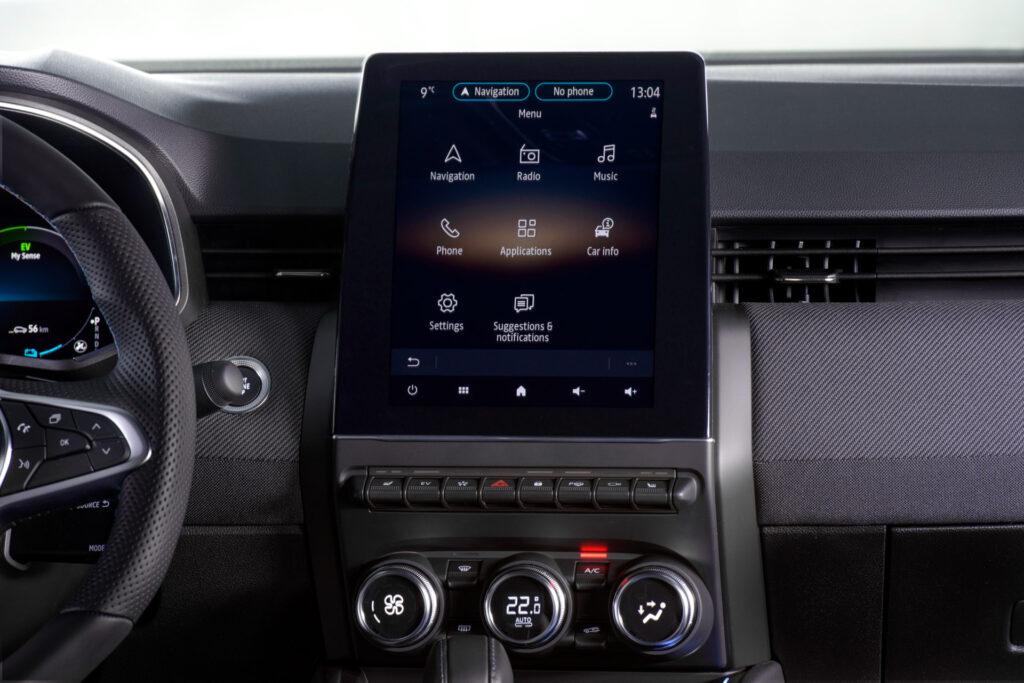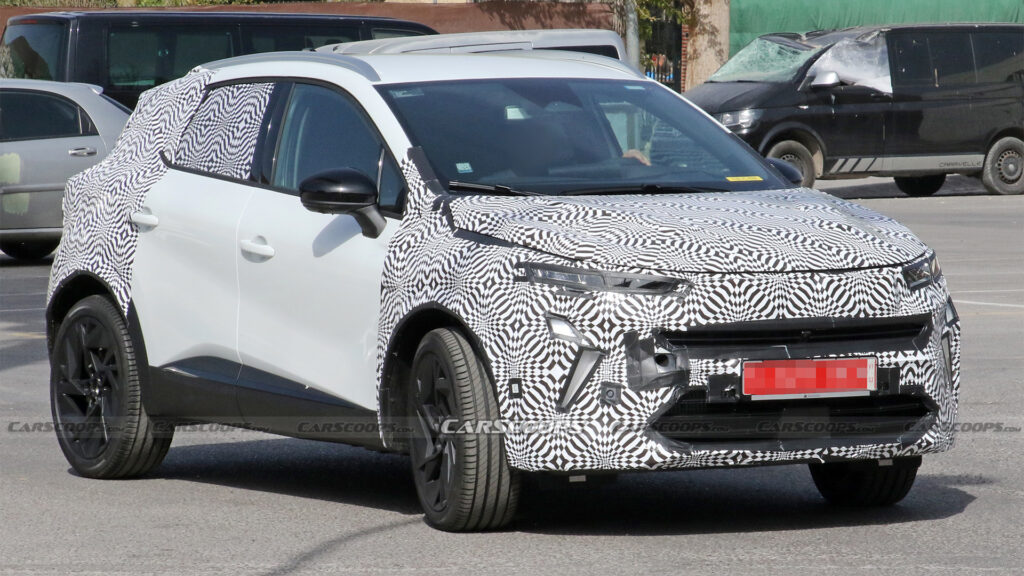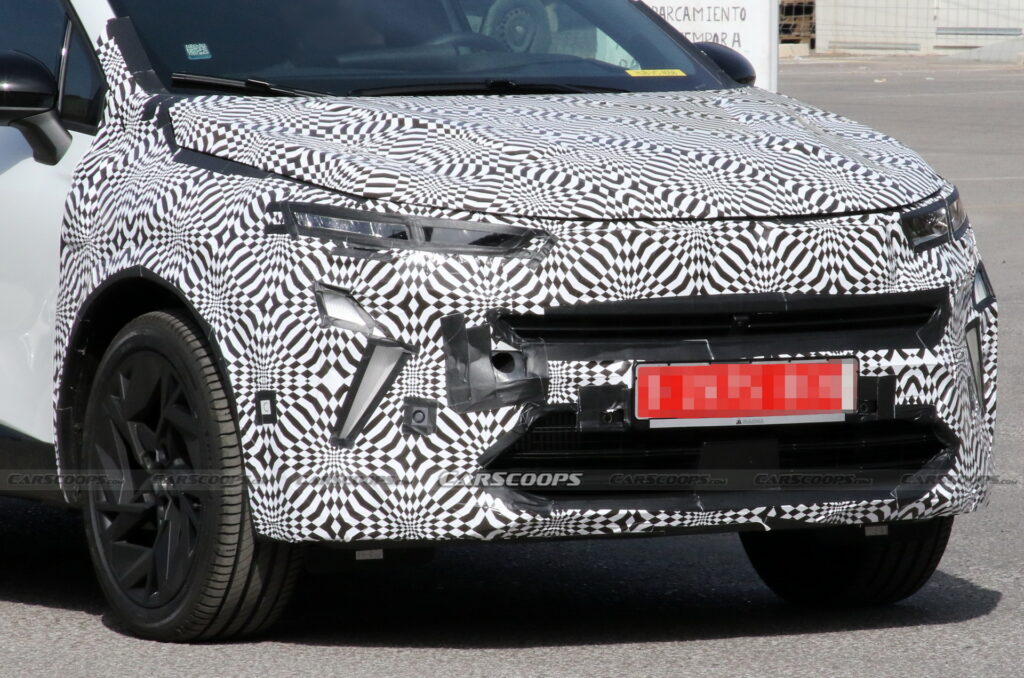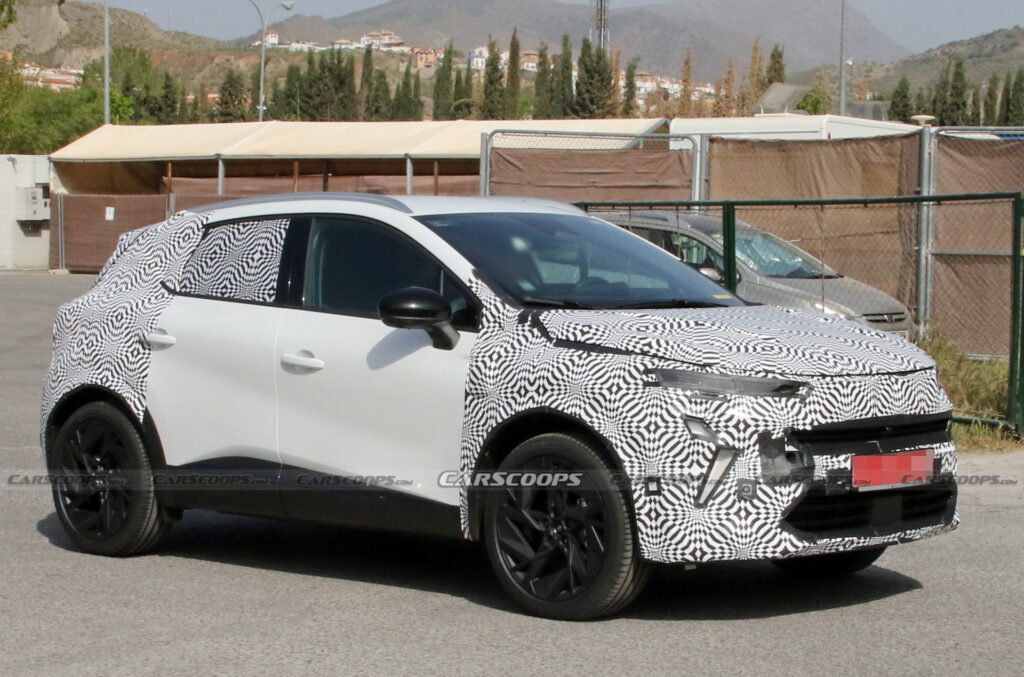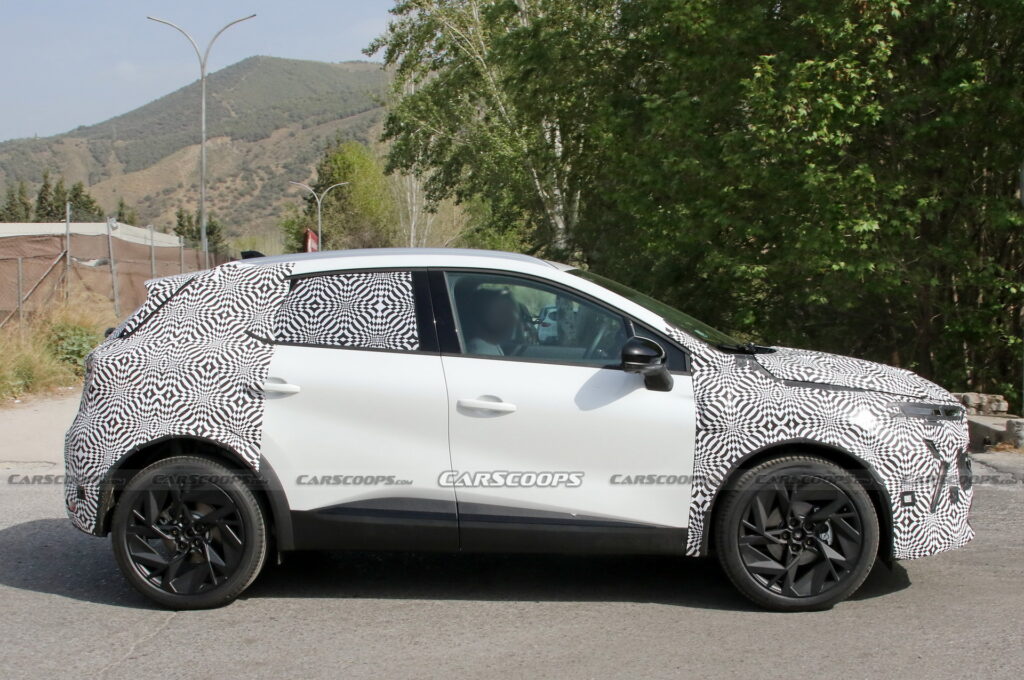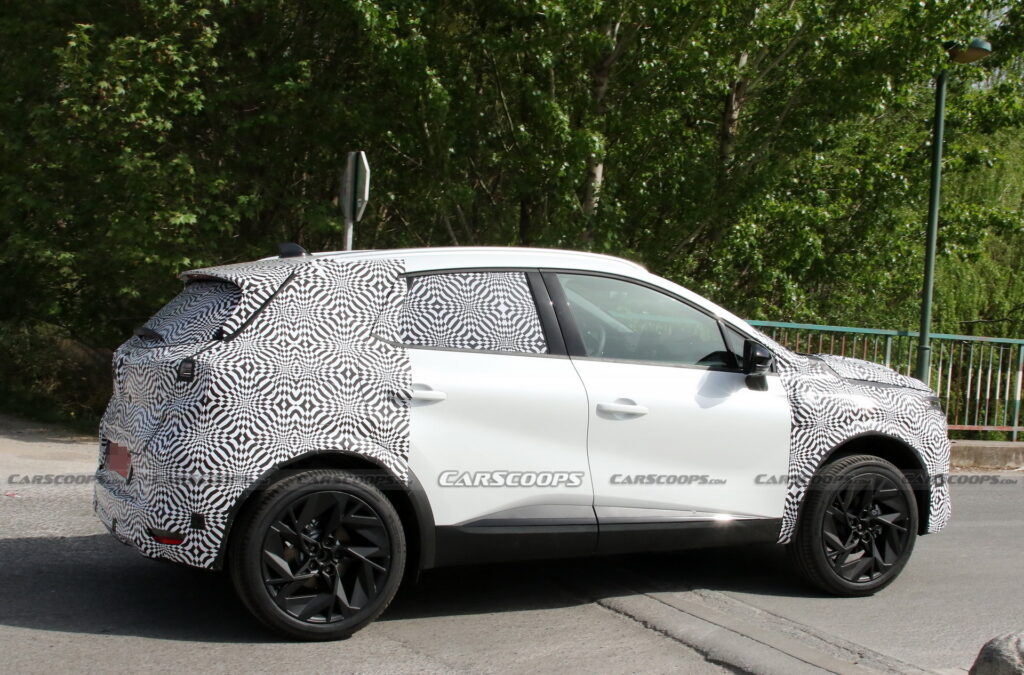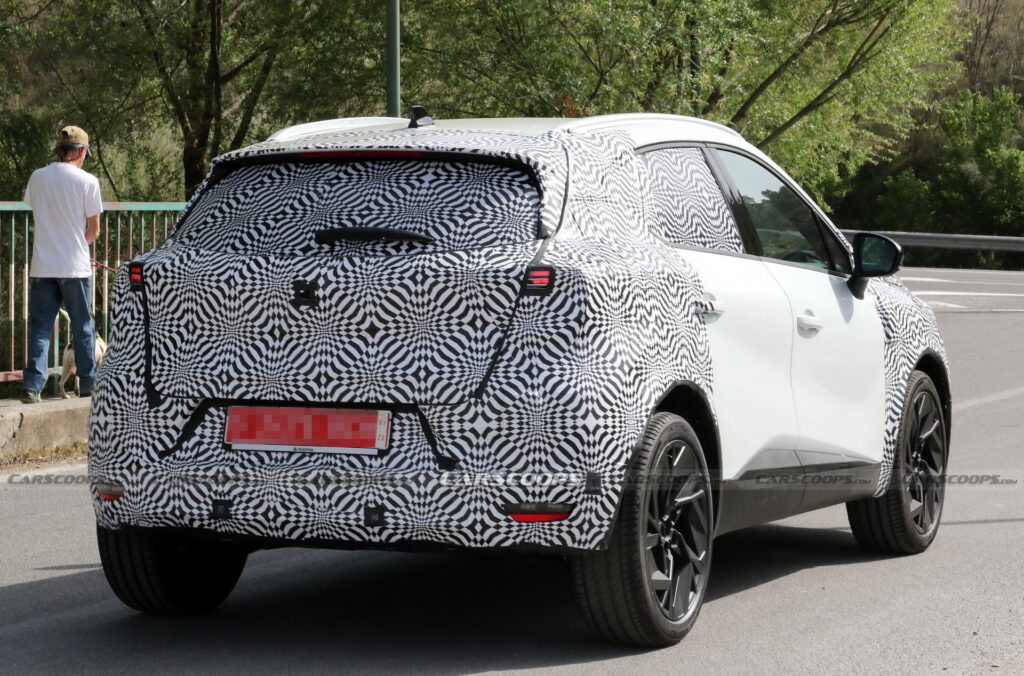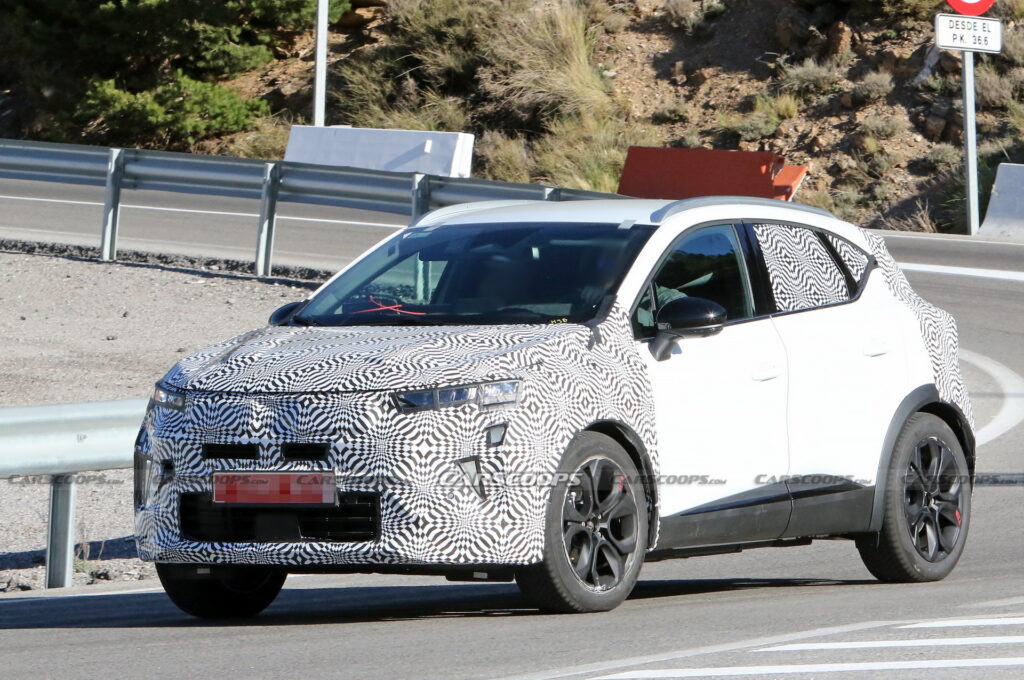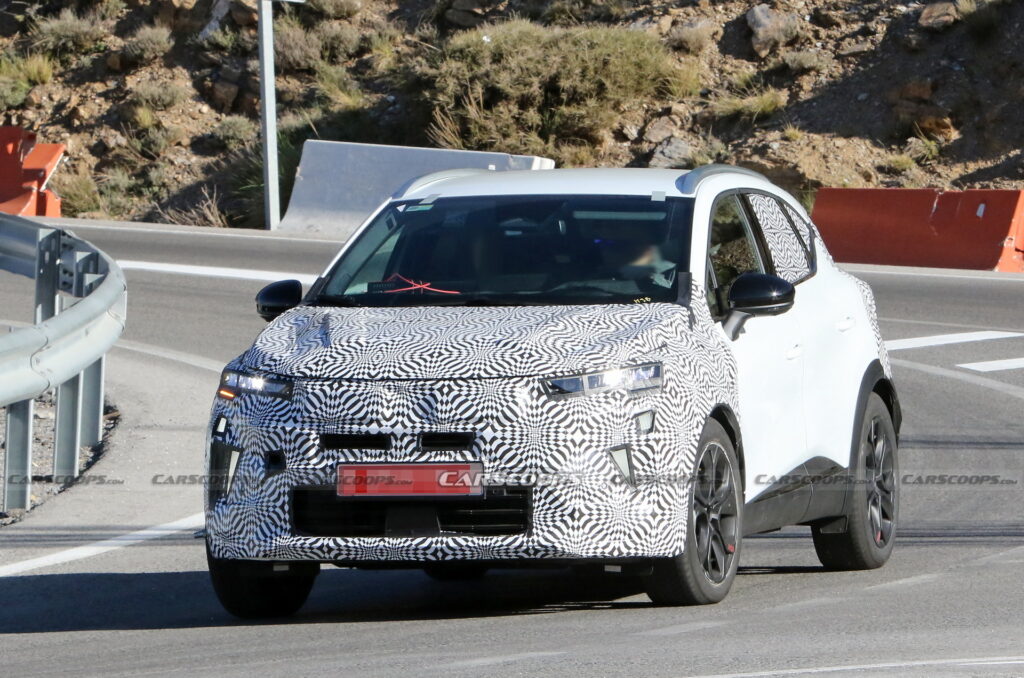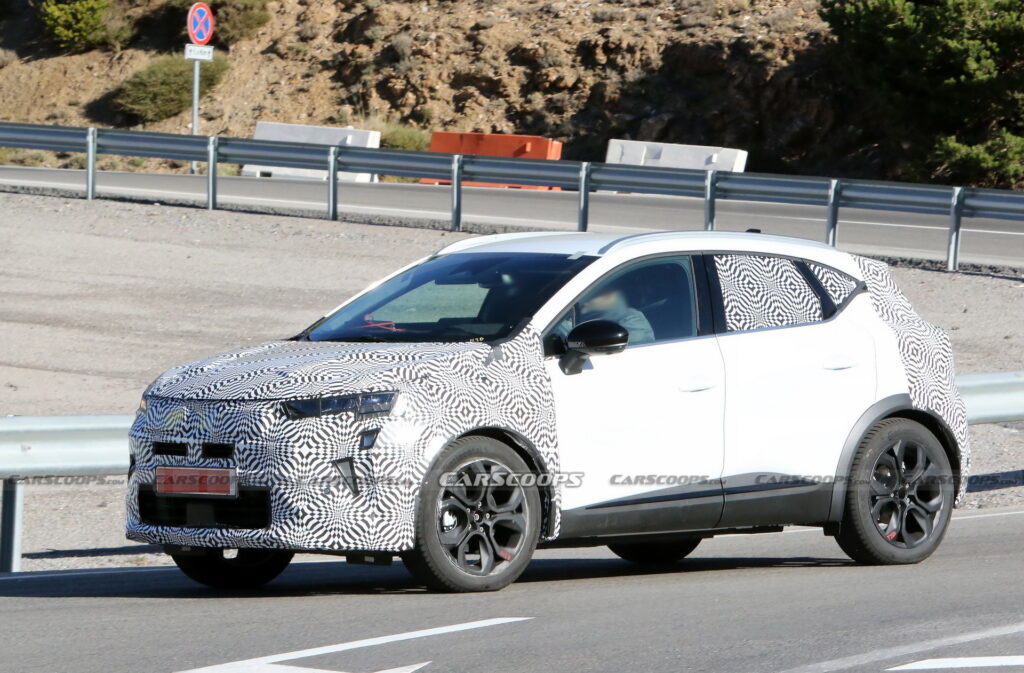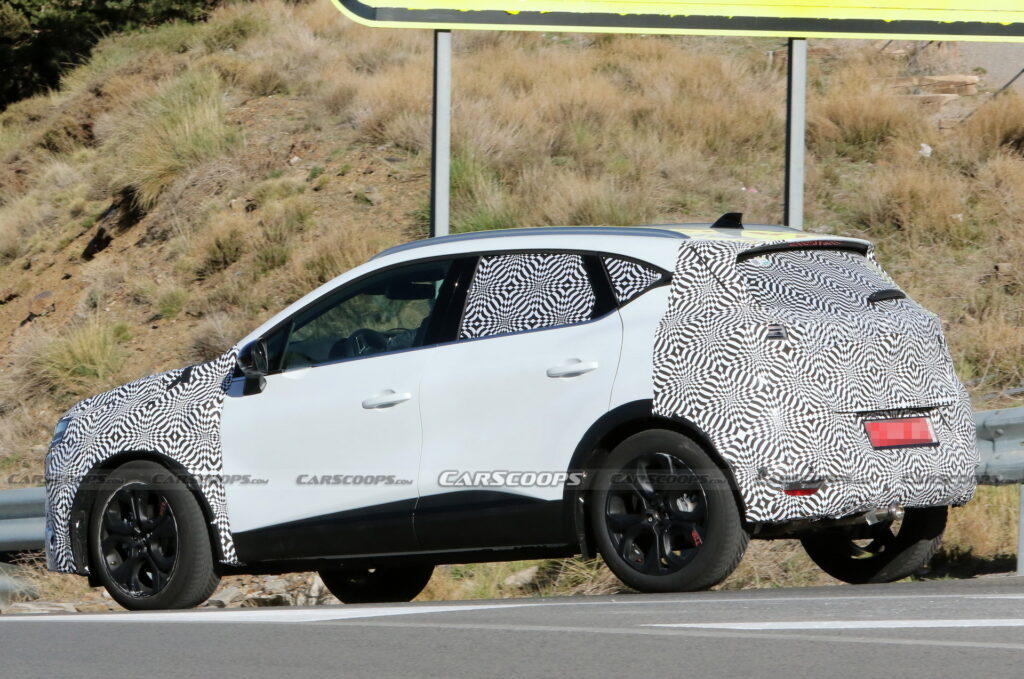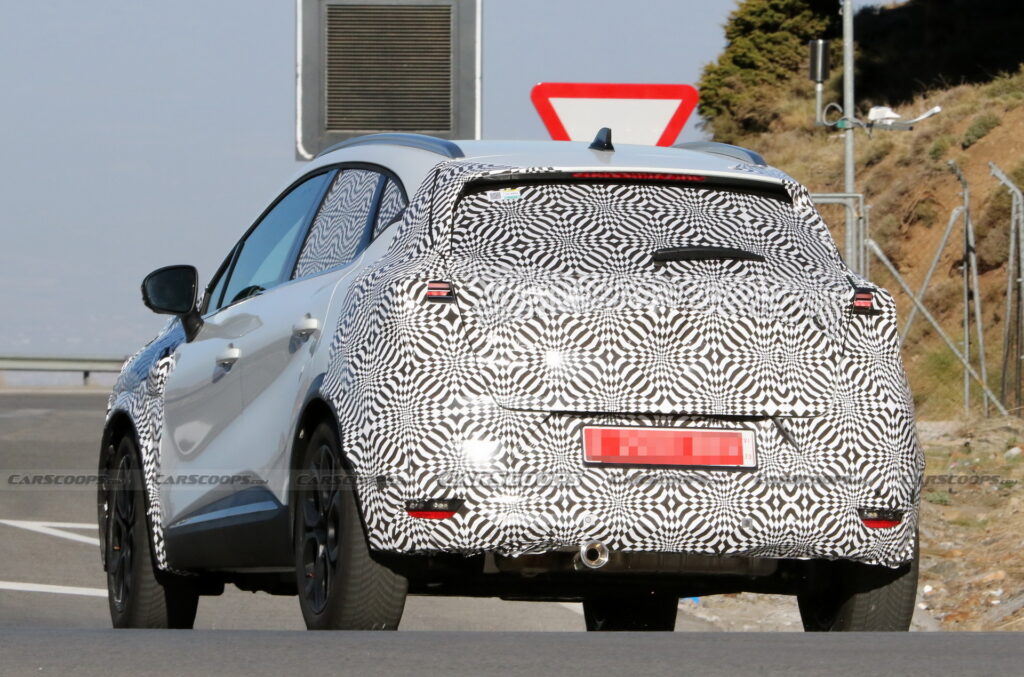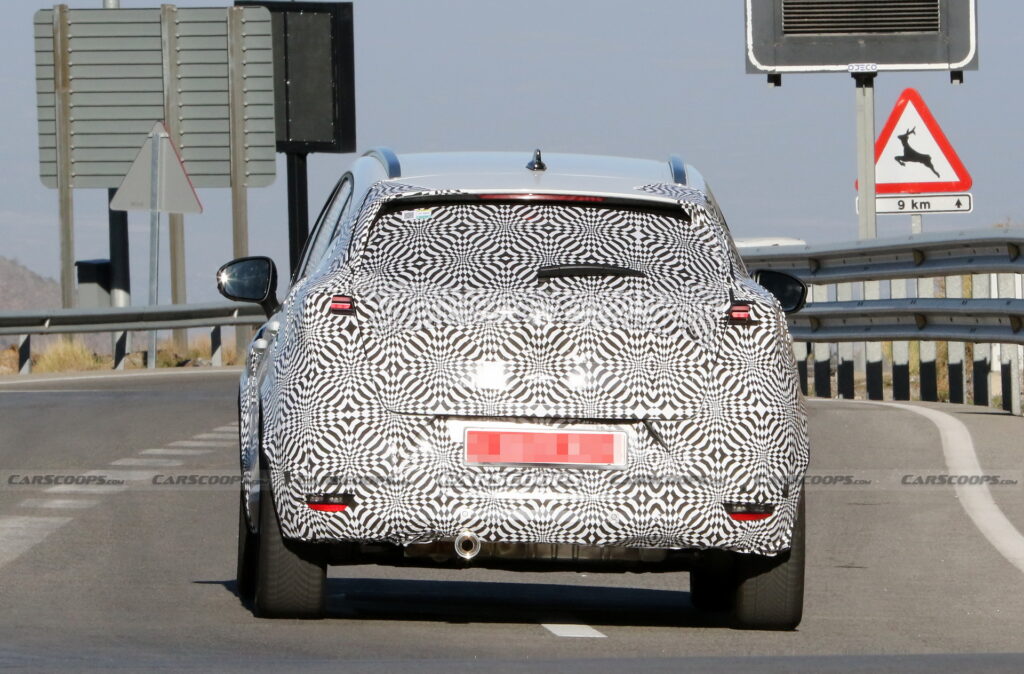Update: We’ve just received an early sneak peek at the refreshed Captur, courtesy of patent drawings filed by Renault well in advance of the sub-compact SUV’s official debut next year. We’ve also thoroughly updated this article to incorporate all the latest available information. (12/11 and 2/9)
Renault is gearing up to refresh the Captur with a series of updates aimed at reinforcing its position in the fiercely competitive small crossover segment in Europe.
Fresh Styling Cues
The current, second generation of the Captur was introduced in 2019, but Renault’s styling language has evolved quite a bit since then. Thanks to the patent drawings, we now know that most of the cosmetic updates are concentrated on the front end, departing from the current model’s bulbous design in favor of a more angular styling. The Captur follows a similar design approach as the recently facelifted Clio and flagship Rafale, becoming the third production model to feature the revised LED headlights with arrow-shaped DRLs on the bumper. Additionally, the SUV will showcase Renault’s new emblem within the updated grille.
More: 2024 Renault Rafale Is Brand’s New Flagship Coupe-SUV With Up To 296 HP
The only differences on the profile seem to be the removal of the chrome accents, which have fallen out of fashion lately. However, it’s possible that Renault may retain them in certain trim levels. As for the rear end, it remains largely unchanged, with minimal tweaks focused on the lower part of the bumper and the new LED taillight graphics.
Furthermore, there are speculations about the introduction of a sportier Esprit Alpine trim to the Captur range. This variant would likely feature larger alloy wheels, a more dynamic interior ambiance, and abundant Alpine branding.
Combined, these revisions should further distinguish the Renault Captur from its Japanese twin, the Mitsubishi ASX, which made its debut last year. This facelift will also ensure that the Captur remains modern and competitive in Europe’s bustling B-SUV segment. It’s worth noting that the Peugeot 2008, Ford Puma, and Skoda Kamiq recently underwent facelifts, intensifying the spirited competition. Other noteworthy contenders in this segment include the new generation Hyundai Kona and the Toyota Yaris Cross.
More: Peugeot 2008 Facelift Gets Bigger Mouth, Hybrid Engines And Extra Range For E-2008 EV
While the patents don’t provide a glimpse of the interior, updates are anticipated to encompass the expansion of the larger 9.3-inch infotainment touchscreen to additional trims, along with the introduction of a 10.2-inch digital instrument cluster. The software is expected to be upgraded to Renault’s latest OpenR infotainment system, showcasing refreshed graphics and enhanced connectivity features.
It remains uncertain whether Renault will continue differentiating lower-tier trims with hard plastics on the dashboard, while employing softer materials for higher-spec models. Furthermore, there is a possibility that more advanced ADAS (Advanced Driver Assistance Systems) features will become available across a wider range of trims, thereby improving the safety of the Captur and potentially resulting in a favorable score in EuroNCAP’s tests.
At 4,329 mm (170.4 inches) in length, the second-generation Renault Captur currently holds the title of being the longest vehicle in the B-SUV segment. With the upcoming update, it is expected to retain this position, as its rivals would need to wait for their new generations to catch up. This ensures that the Captur will continue to be one of the most spacious and family-friendly SUVs in its class.
Carry-Over Powertrains
Taking cues from the recently facelifted and mechanically-related Clio, it is likely that the base model of the Captur could be equipped with a carry-over turbocharged 1.0-liter three-cylinder engine. This engine configuration is expected to generate 99 hp (74 kW / 100 PS) when running on LPG and 89 hp (66 kW / 90 PS) on regular petrol. While there were initial expectations of the 1.5-liter dCi turbodiesel being discontinued, the fact that it remains available as an option for the Clio suggests that the Captur might continue offering it for a little longer as well.
The existing self-charging hybrid and plug-in hybrid options with the E-Tech badges are anticipated to continue in the refreshed Captur lineup, as electrification gains popularity among buyers. However, our sources suggest that the inclusion of the mild-hybrid 1.3-liter (12V) and 1.2-liter (48V) powertrains from the larger Austral is unlikely for the Captur. This decision is based on the perceived higher cost of these powertrains, which is deemed unsuitable for the small SUV segment.
Extended Family Of SUVs By Renault
Spy Photos CarPix
Renault recently announced the Symbioz compact SUV which is essentially a longer version of the facelifted Captur. This means that the French automaker will soon have five SUVs with electrified powertrains (Captur, Symbioz, Austral, Espace, and Rafale) plus two fully electric crossovers (Megane E-Tech and Scenic E-Tech). Also, there’s the production version of the Renault 4ever Trophy concept that could arrive by 2025 as a fully electric, practicality-focused, and rugged-looking B-SUV.
The facelifted 2024 Renault Captur is expected to make its world premiere by mid-2024, although the company has yet to announce a date.
